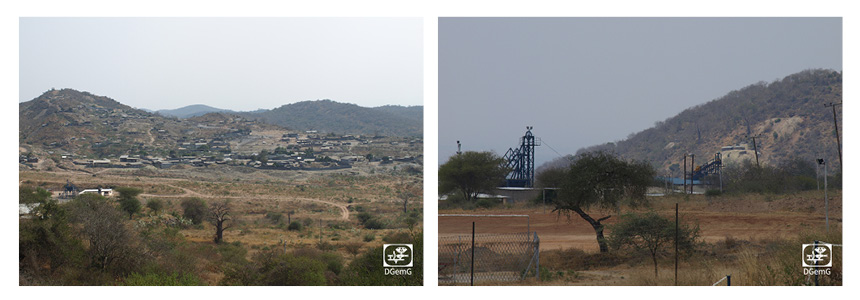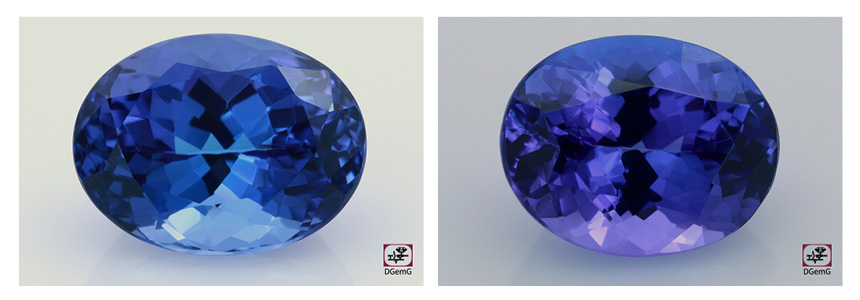Tanzanite is often called the "stone of the 20th century", as it was discovered in 1967 and became the first popular natural "substitute" for the blue colour of sapphire. Gübelin & Erni (1999) refer to it as the "blue patrician from Africa" and note: "Of all the novelties that captured people's hearts in the second half of the 20th century, no gemstone was anywhere near as successful as tanzanite."
Many stories are told about the discovery of Tanzanite, including the following:
An Indian tailor named Manuel de Souza had dreamed since childhood of discovering something that would make him a rich man and free of worries. He often wandered through the bush between Arusha and Moshi in northern Tanzania. In July 1967, he was out in the bush strolling around and got lost. He met a group of Maasai herdsmen and sat down by the fire with them. They asked him what he was looking for in the bush and he told them about his dreams. One of the shepherds suddenly pulled a small stone out of his belt and asked Manuel: "Are you looking for something like this?" The stone was deep blue and sparkled in the evening sun, making Manuel's heart beat up to his neck. He thought it must be a sapphire and asked the young shepherd: "Are there sapphires here? Where did you find it?" The shepherd looked at his companions and after a while the leader said: "He is an old man, may the sun of happiness shine on him at the end of his life, lead him there." The two set off an arduous journey with routes often blocked by huge fallen trees, which the Maasai believed had been torn out of the earth by angry gods. They travelled all night, their skin bleeding and torn open by thorns. Mosquitoes stung them and they fell over creepers.
Fortunately, it was worth the effort. With the first rays of the morning sun, they came to a hollow with blue stones scattered on the ground that glittered in the sunlight. "So many sapphires," the tailor thought. Despite his excitement he was realistic enough to take his knife and try to carve one of the blue stones with the sharp point. But behold, the stone could be carved! "So it's not sapphires after all, but what is it then?", he turned to the Maasai. But the Maasai had already disappeared into the bush. As Manuel was familiar with the law, he staked a claim and went immediately to the district capital Moshi to have his claim registered. As the stones were no sapphires, geologists, mineralogists and gemmologists had to prove their identity.
 Pic2: View of the tanzanite deposit which is now mined to a depth of over 1000 metres underground (left). The conveyor systems can be seen on the right. Photos: U. Henn, DGemG
Pic2: View of the tanzanite deposit which is now mined to a depth of over 1000 metres underground (left). The conveyor systems can be seen on the right. Photos: U. Henn, DGemG
At first it was assumed that the stones might be cordierite or dumortierite, but scientific studies at the University of Heidelberg (Bank et al., 1967) determined the material to be zoisite, a collector's stone that had been insignificant until then.
The first specimens were bought by the Tiffany company in New York. Then vice-president H. Platt stated that the stones looked beautiful, but the name was impossible to market them: "Zoisite sounds too much like suicide which prevents superstitious people from buying them." He therefore suggested the name tanzanite which honours the origin – Tanzania is the only country that supplies commercially significant quantities of this blue variety of Zoisite. Within a short time, tanzanite became very popular.
However, the finder of the stones, the tailor Manuel de Souza from Arusha, had talked too much about his discovery and so many gemstone seekers and traders came to the region and did good business with the new stones. He, who should have become a "stone-rich" man, thought they had all stolen from him. His discovery melted between his fingers, and he went back to work on his beautifully ornate old sewing machine. He said: "I found the beautiful blue stones, but they were taken from me; I never took anything from anyone, only from the earth; perhaps the earth spirits were angry with me and punished me for that."
The hallmark of tanzanite is its deep blue colour, which ranges from ultramarine blue to sapphire blue to violet blue. Vanadium is responsible for the colour. Its strong pleochroism is a typical characteristic, i.e. it shows different colours in different directions, namely blue, reddish-violet and yellowish-brown. By heat treatment, the less attractive yellowish-brown hue can be changed into blue in most rough material, thus producing a more attractive colour.
The deposit in the Merelani Hills in northern Tanzania, near Mount Kilimanjaro, is unique. The mine region covers an area of approx. 7 x 1.2 km and is currently being mined to a depth of over 1000 metres underground.
 Pic3: Fine tanzanites with blue (left, approx. 14 ct) and violet (right, approx. 12 ct) body colour. Photos: T. Stephan, DGemG
Pic3: Fine tanzanites with blue (left, approx. 14 ct) and violet (right, approx. 12 ct) body colour. Photos: T. Stephan, DGemG
In 2002, a crystal weighing 3.37 kilograms was discovered and named "Maenzi Tanzanite". An incredible find was made in the mine in 2020 by Saniniu Laizer and his team. He discovered two giant crystals weighing 9.4 and 5.8 kilograms, which he then sold to the Tanzanian government for US$ 3.4 million.
One of the largest cut specimens is the Namunyak Tanzanite (423.56 ct).
Literature
BANK, H., BERDESINSKI, W. & NUBER, B. (1967): Strontiumhaltiger trichroitischer Zoisit in Edelsteinqualität.- Z. Dt. Ges. Edelsteinkunde, Heft 61, 27-29.
GÜBELIN, E. & ERNI, F.-X. (1999): Edelsteine – Symbole der Schönheit und der Macht.- Königsbach-Stein, Verlag Hans Schöner.
Author
Dr. Ulrich Henn, DGemG
© 2023
Translation
Christine Lucia Matter, DGemG



